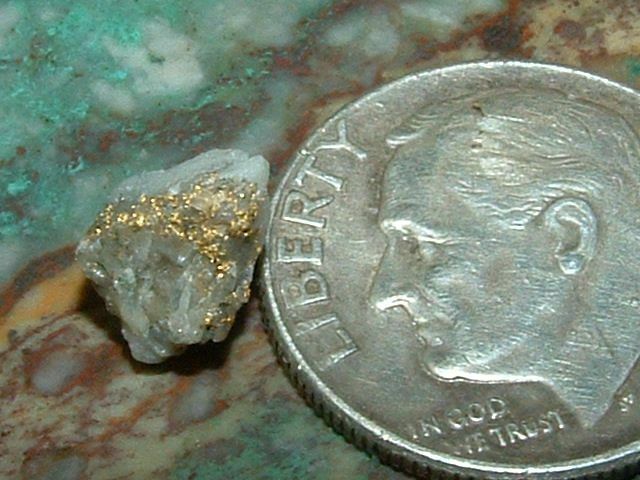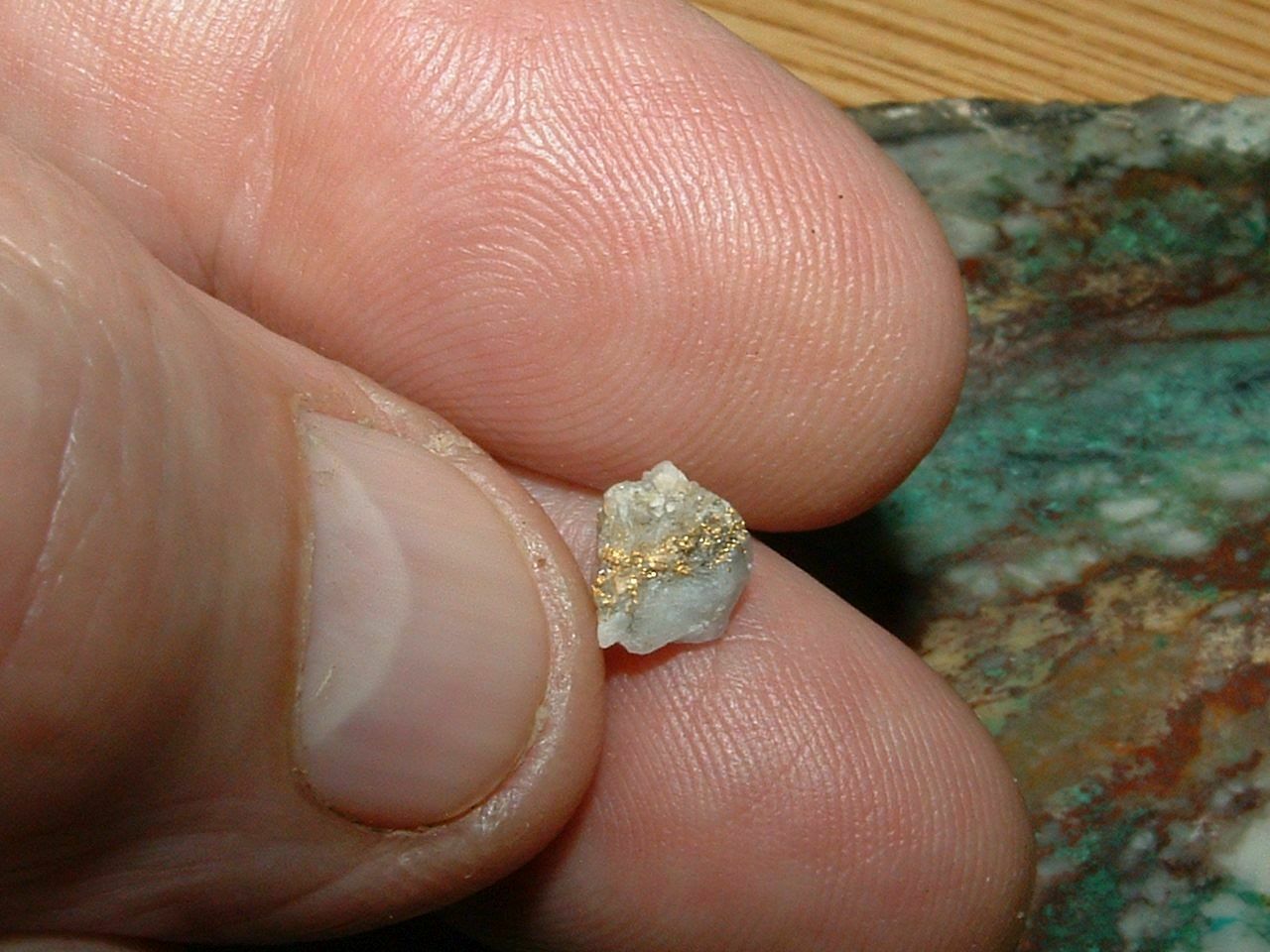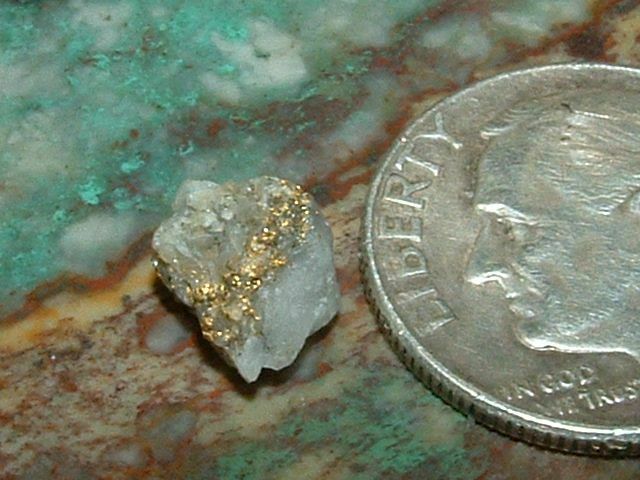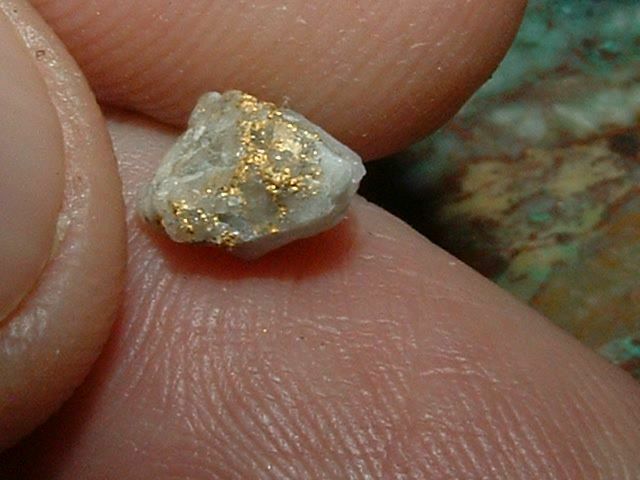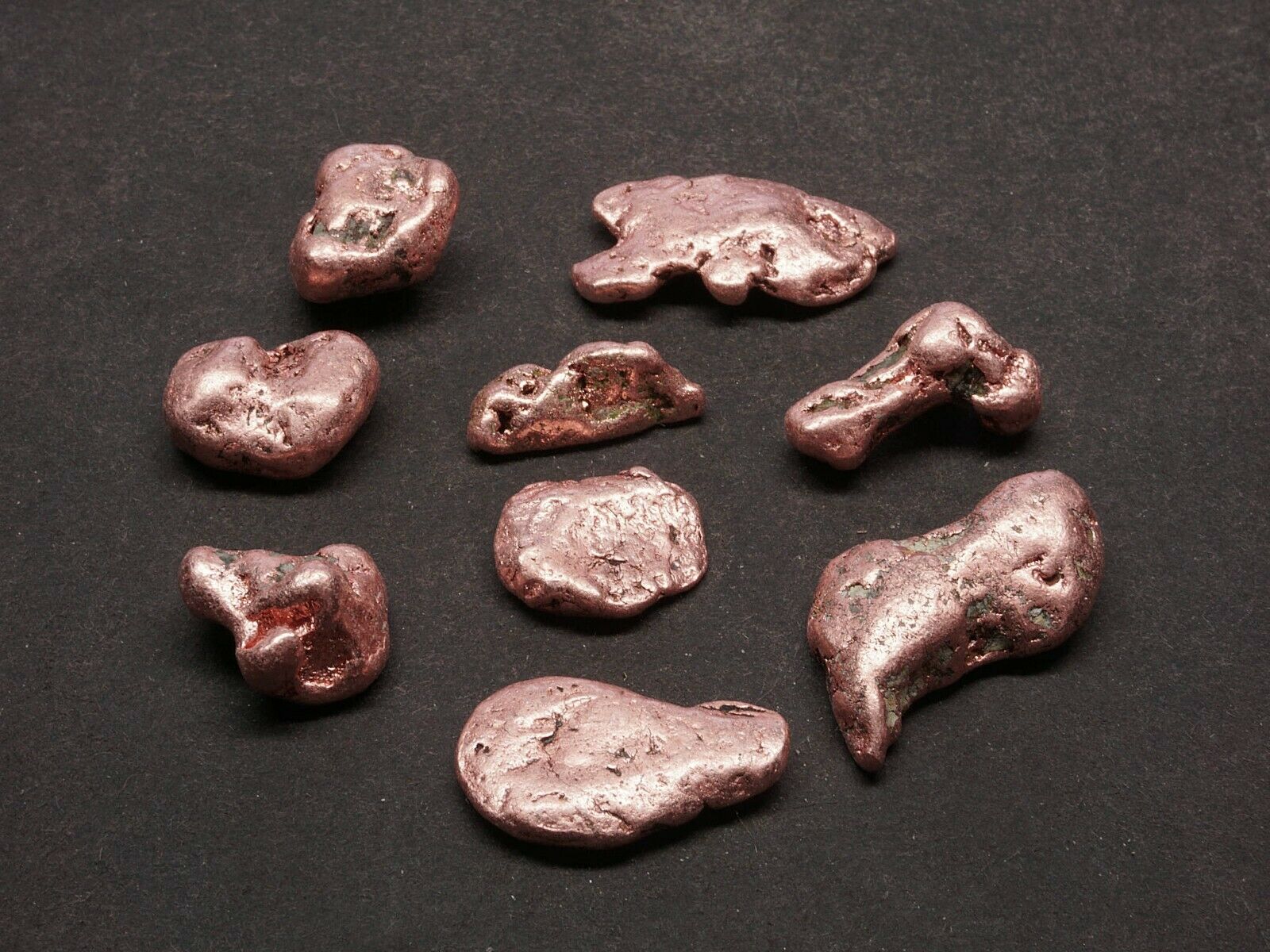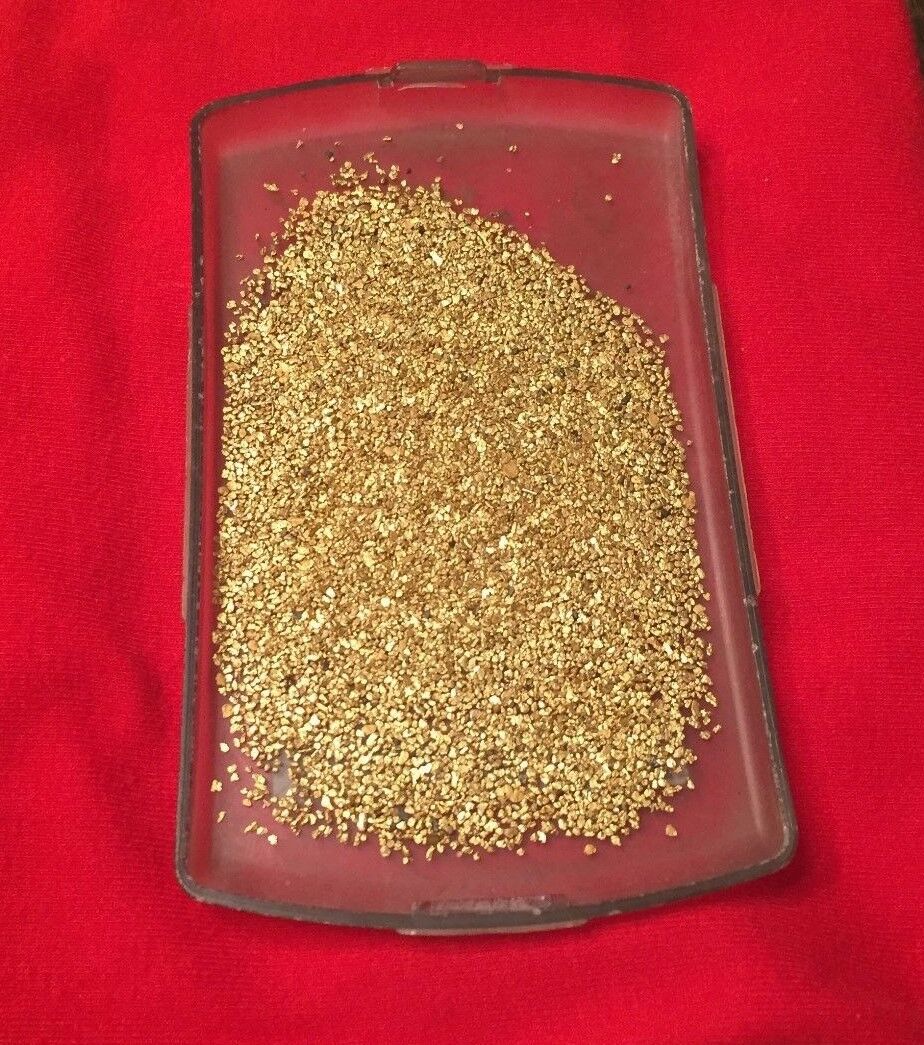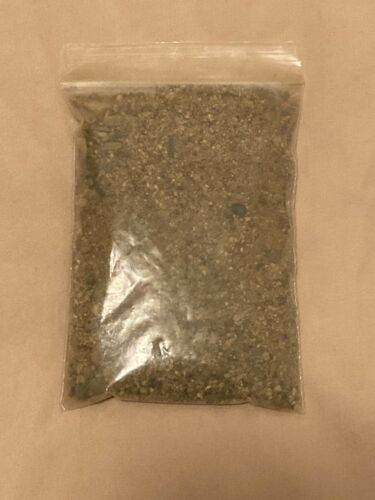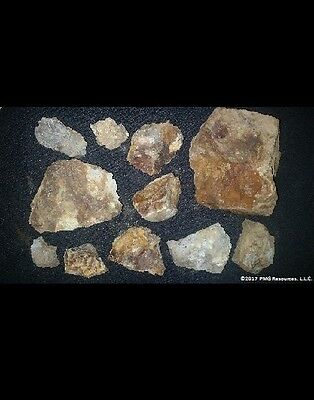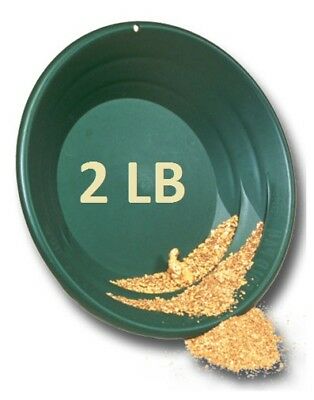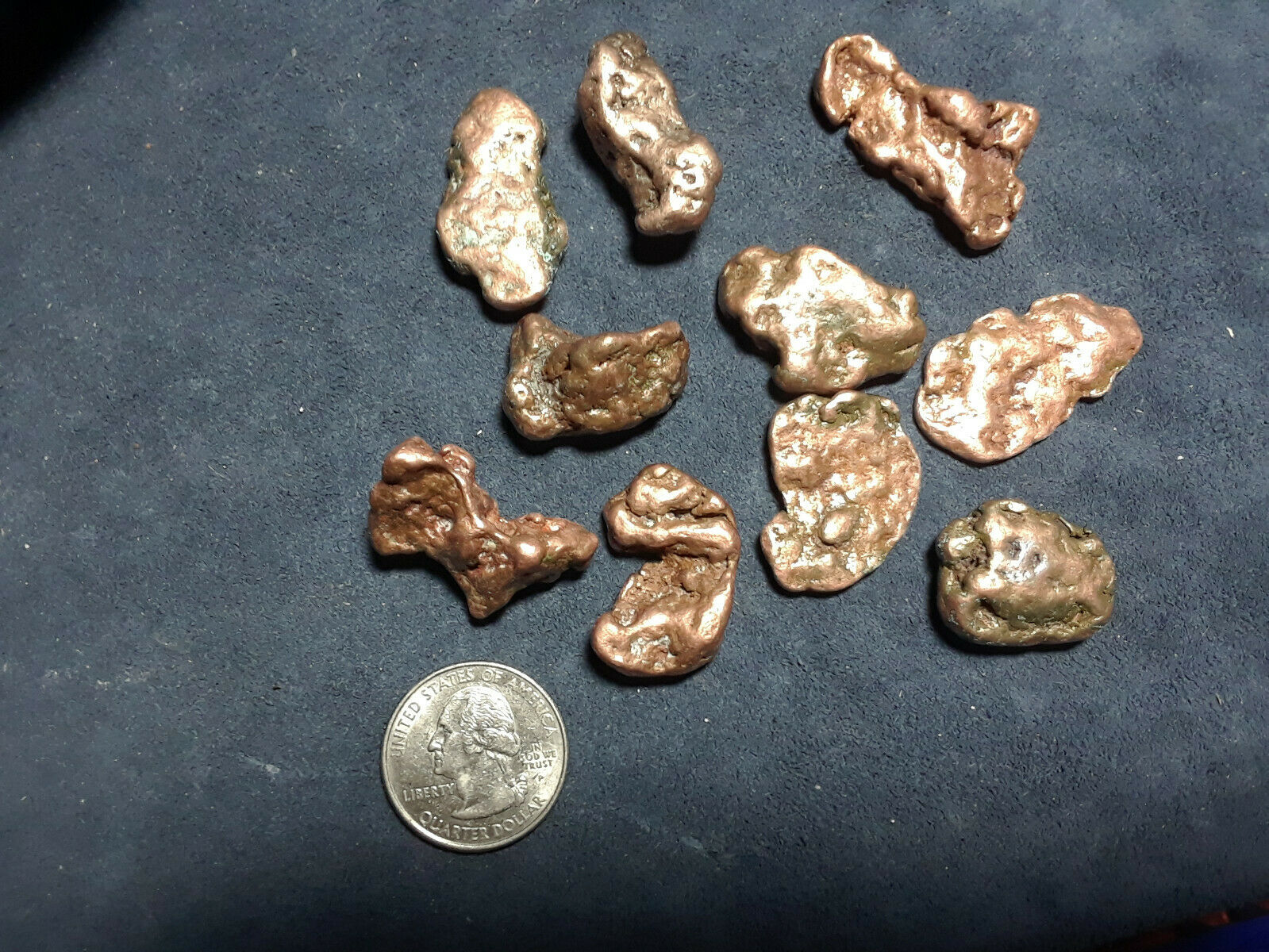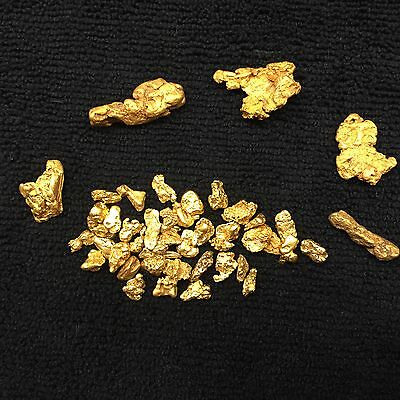-40%
RICH GOLD QUARTZ SPECIMEN .31 GRAM NATURAL CALIFORNIA GOLD IN QUARTZ
$ 15.31
- Description
- Size Guide
Description
GOLD QUARTZ SPECIMENfrom
CALIFORNIA
R
uler is
1/4"
wide (6 mm). U.S. 10 cent coin is 17 mm in diameter.
S
pecimen weight:
.31
G
ram -
4.9
G
rains
S
ize:
7.8X6.4X5.4
mm
Q
uartz is one of the most common minerals on the planet. Seeing gold inside it seems almost miraculous. Here, the gold shows thickly-concentrated in a band which dissects the rock. Admittedly, it's small, yet quite rich in Au. When it comes to creating rocks, Mother Nature has few equals (that we know of). That's because planet earth is covered with both oxygen and water. These elements act as catalysts in the creation of new mineral species. This U.S.A. gold quartz specimen is naturally-occurring. My source found it in California. It's
a lousy investment if you're only shopping for gold bullion or other plumb gold items. These small rocks are more for gold quartz aficionados, those who appreciate more organic forms of natural gold.
I don't sell low grade gold ores. I sell authentic, naturally-occurring gold quartz ores with visible gold. These high-grade beauties are hard to find and expensive to obtain. My prices are not based upon the amount of gold contained, but upon the authenticity, rarity and collectibility of these unique specimens.
U.S. SHIPPING - .00
(includes USPS tracking to all U.S. destinations)
INTERNATIONAL CUSTOMERS S&H
.00
FAST REFUND OFFERED
(If, for any reason, you're not happy with this item)
I poured through old mining dumps for years looking at orange-yellow-rusty rock through a loupe, but I never found a piece with visible gold.
Hydrothermal solutions carrying gold and silica crystallized into veins of gold quartz. This specimen comes from one of the many gold-bearing vein systems throughout the Coyote State of Arizona.
Weight Conversions:
15.43 GRAINS = 1 GRAM
31.103 GRAMS = 1 TROY OUNCE
24 GRAINS = 1 PENNYWEIGHT (DWT)
20 DWT = 1 TROY OUNCE
480 GRAINS = 1 TROY OUNCE
S & H
Discounted for combined shipments.
U.S. BUYERS & INTNL.
PAYMENTS
For U.S. buyers: We accept paypal
For intnl. customers: We accept paypal.
Pay securely with
www.paypal
.
Payment must be made within 7 days from close of auction. We ship as soon as funds clear. If you have questions, please ask them before bidding.
REFUNDS
We leave no stones unturned insuring our customers get what they bargained for.
If you're not satisfied with this item, contact me. Then, if the problem can't be fixed, return product within 30 days in 'as purchased' condition for a full refund
PLACER GOLD SAMPLING
Some of the more-expansive alluvial fields, fans, plains, valley floors, et al. containing significant deposits of 'free' placer gold can extend for a great many miles. This means lots of untapped potential in far-flung areas where a prudent prospector, through diligent, deliberate sampling, might explore and find un-searched ground worth mining.
With regards to
virgin placer deposits, the depth of ancient channels, the extreme density (consolidation) of alluvial packs, and the high concentration of boulders often make thorough testing a virtual impossibility. In some ways, this applies more to operators using heavy equipment than it does to artisanal, pick and shovel miners who are known to devise ingenious ways of moving massive boulders and breaking up compacted sediments. A person on foot can climb rugged, vertical terrain to hand-test cemented gravels on high terraces or benches. Exploring the harder-hit placer fields all around the globe, one encounters 'coyote holes' and 'rat holes' everywhere; a sure fire indication of the burrowing practices of old time prospectors. Small scale miners even tackle the dubious job of crawling or digging far down into the bowels of the earth to excavate cemented caliches, compacted clays, hard country rock, all done by hand one spade-full, one hammer swing, one bucket-full, one charge at a time. In the case of deep channel deposits, with who knows how many feet of sediment layered on top of older alluvial overburden, far below, much untested bedrock material may remain buried out of sight, out of reach. Armed with massive excavating machinery even, such conditions pose major challenges to operators attempting to test potential pay-streaks and pay-layers in deep, virgin, placer deposits. The old timers often sunk vertical shafts wind-lasing dirt up from a hundred feet or more as they attempted to discover and muck out gold-bearing leads far down on bedrock. Historical accounts reveal that in many mining districts, fatalistic miners from yesteryear, impervious to the dangers, did indeed encounter rich gravels.
In gold country, one never knows what values lie 5 feet inside an 80 foot deep stretch of remnant channel whether it’s buried at the bottom of a gorge or suspended high up on a mountainside. Make no mistake, the 'giants' of yesteryear blasted away a lot of the best ground, but there is no question they did not get it all. Still, no one can determine what was left without running tests. The same question must be asked when surveying a twenty mile long stretch of river-bottom hammered by bucket-line dredges a hundred years hence. What did they unintentionally leave behind? What kind of values were vacated down on bedrock? Are there large expanses of un-worked channel still down there now covered with tailings or boulder piles? Questions. Always more unanswered questions for the bone-tired prospector.
Thanks for checking out our digs.
G
old of
E
ldorado
1-14-13
